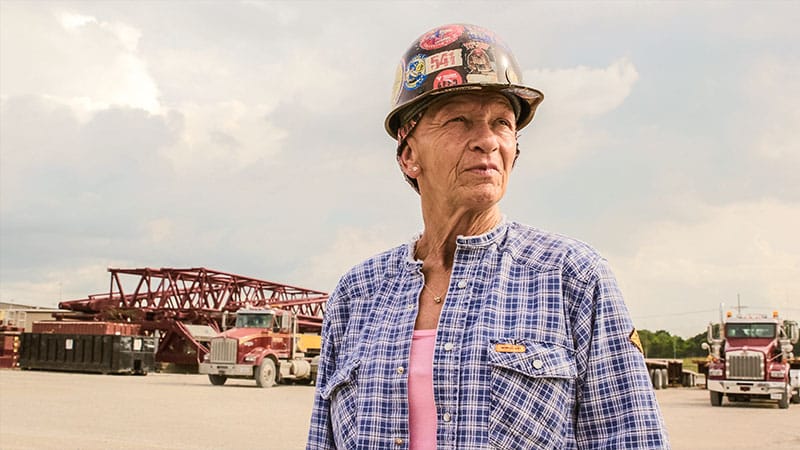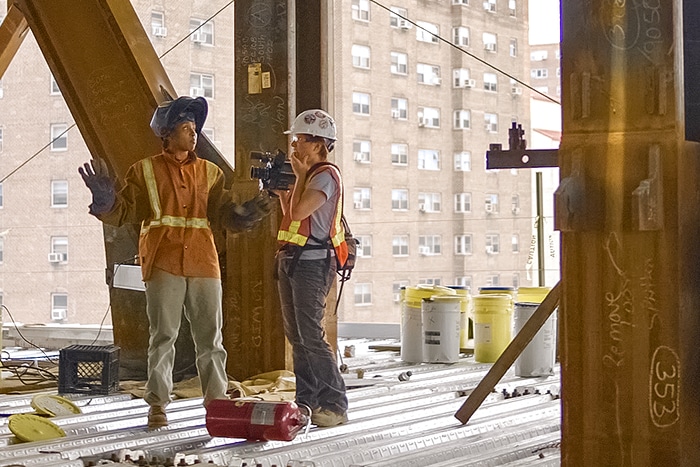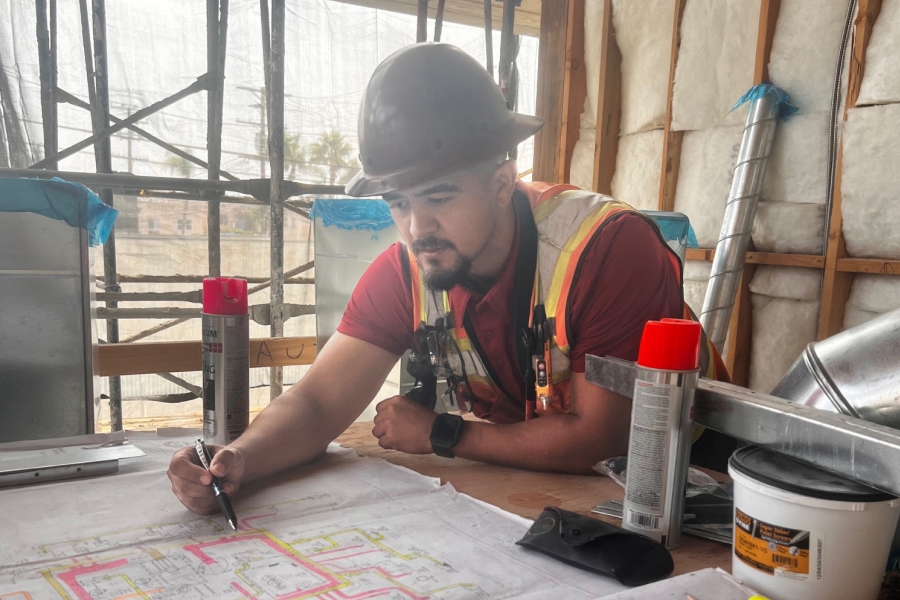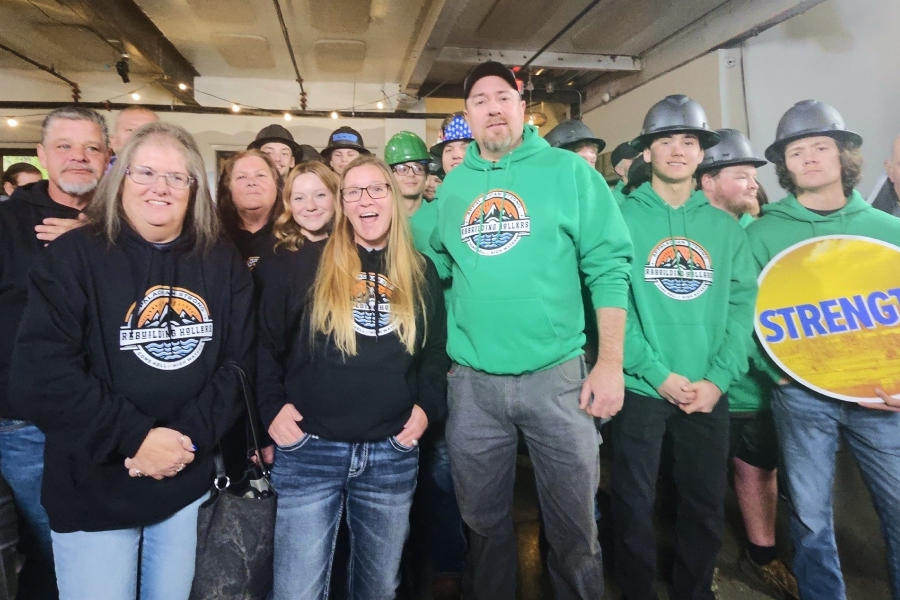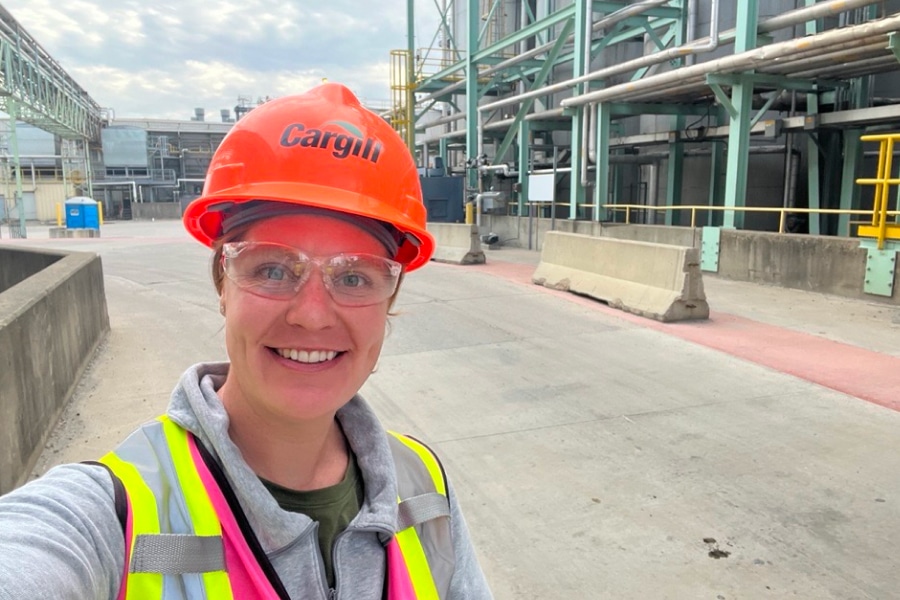Most documentaries are categorized as “passion projects.” Filmmakers often go to great lengths to capture the authenticity and true perspectives of their subjects, and in the process, the project becomes not only a project; it becomes an actual part of their lives. For the past six years, filmmaker Lorien Barlow and her cinematographer, Autumn Eakin, have traveled from job site to job site, across the country to create a documentary about women in the trades.
Begun in 2013, “Hard Hatted Woman,” is a gritty, funny, endearing, captivating and sometimes brutally honest film that looks at life in the trades from the firsthand perspectives of five different tradeswomen. Having helmed the film in all aspects and overseen all of the funding, Barlow’s journey has already been embraced by the industry. “Many companies have stepped up and supported the project. We could never have come this far on art grants alone, so this film would truly not have been possible without the generosity of our industry partners.” The inspiring filmmaker sat down with the Bluebeam Blog to discuss why the film is so important to the current and future climate of the growing AEC industry.
Bluebeam Blog: What motivated you to create this documentary?
Lorien: There were a few reasons. For one, the fact that it never had been done. When I first learned about the tradeswomen movement, my first thought was, “There must be a great documentary out there about these women.” I looked online and there was so little coverage on it; maybe two or three books on the topic, and no feature documentary film. As a documentary filmmaker, you definitely look for those untold stories. And you also want to find timely stories—those that are relevant to our current cultural moment.
Bluebeam Blog: When you got started, how did you go about trying to find these women?
Lorien: If there was one tool that I used the most to find my characters, it was Facebook because tradeswomen gather online. Once I had gained the trust of a few, this whole community sort of opened up and it wasn’t hard at all to connect with people. You also earn legitimacy and trust as you go along and learn more about their world, so you’re less of an outsider. Most of my characters I found through other tradeswomen.
“I want to elevate the trades. I want people to see the dignity and the glory of the work, the humor in it, the satisfaction, the reward. But I also want people to feel the pain of the fact that we gutted shop class, vocational education, the unions are dying and our infrastructure’s crumbling.” – Lorien Barlow, Director, “Hard Hatted Woman”
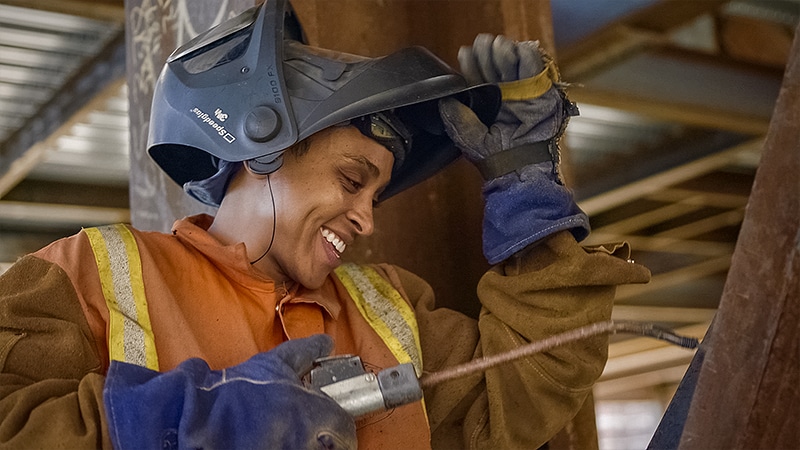
Bluebeam Blog: When you first set out to make the film, what was the ultimate goal or message you wanted to send, and did that change at all after you came to know the women more?
Lorien: I think when I started, I really saw the film as a very personal, intimate, first-person narrative. It felt like portraiture to me. What happened along the way is that I came to know this incredible history behind the tradeswomen movement, and the forces at play in shaping it. So that has become an important framework for the film in a way that I didn’t anticipate.
Bluebeam Blog: Outside of casting, what was your biggest challenge in making the film?
Lorien: The biggest trouble in the edit is finding the balance between light and dark. What I want to film to portray is how these women are really giving their all to be a part of something bigger than themselves, and the heartbreak of what they often face in doing so.
Bluebeam Blog: Did the stories you uncovered give you any ideas as to how the industry can address the labor shortage?
Lorien: The labor shortage is multi-factorial. And I do want to first say that many tradeswomen feel this is actually a “white male labor shortage” everyone is worried about, because they see for themselves how many skilled and ambitious tradeswomen, especially women of color, have trouble getting into the industry and advancing. I imagine the shortage could be solved pretty quickly if serious efforts were made to recruit and train non-traditional demographics. These are very desirable jobs for those demographics, who on average make far less than the average construction worker. However, there are obviously some much broader trends at work, too. At some point our culture started peddling the white-collar dream and the college degree. Kids today are exposed to so very little hands-on technical learning. Manual labor jobs are seen as a last resort. I’ve heard of guidance counselors literally discouraging their students from pursuing a trade. There’s just all of these layers of societal prejudice that have really steered young people away from the trades. So, those are all layers that revealed themselves to me through the making of the film, and it’s changed the way I’m telling the story.
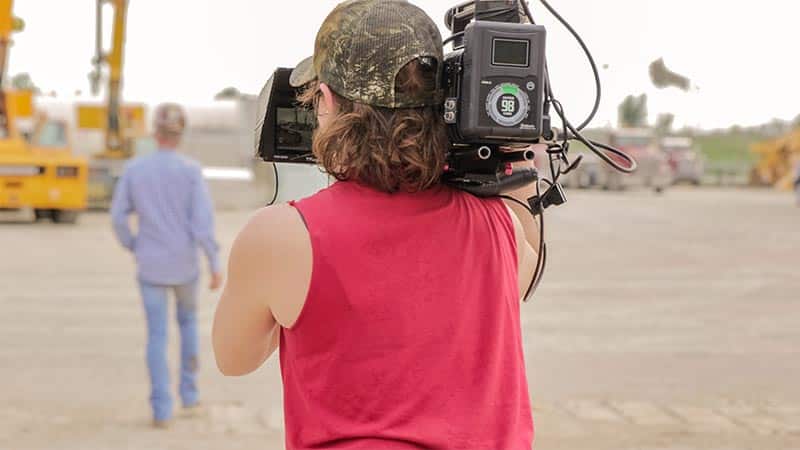
Bluebeam Blog: Now that you’ve embarked on this journey and have been meeting these women and uncovering these stories, do you see construction as an industry, or do you see construction as a culture?
Lorien: That’s a very good question, and I would say it depends on where you are at in the process of construction. If you are in construction management or you’re an engineer or a project manager, then I would say you are in more of an industry. If you’re in the trades, you are definitely in a culture. The trades are so tribal, they have their own language and social codes, it’s almost like an act of translation to spend time among them. I think labor does not see themselves as connected to management whatsoever, because they’re on the opposite ends of the negotiating table. Trades people don’t look at project managers and say, “We’re in the same industry.” Peripherally, yes they know that, but it’s a total cultural divide. And yeah, there’s a profound disconnect, and sometimes, unfortunately, not enough respect between the two.
Bluebeam Blog: How is the film encouraging communication and community within the culture as well?
Lorien: Many universities, vocational schools, nonprofits and companies have expressed interest in hosting screenings of the film when it’s released. They want to incorporate it into a conference or an outreach event or women’s initiative. The film is going to have this really rare and beautiful opportunity to help build a bridge between the white-collar and blue-collar construction world and get that conversation going.
Bluebeam Blog: What do you hope is the ultimate takeaway if somebody watches the film?
Lorien: I hope that everyone in the industry—whether they’re on the labor side or the management side—I hope they watch it and they feel that the film has humanized these women. Maybe they’ve even fallen in love with these women a little bit. I hope that they walk away from this moved to do something; to say, “What power do I have to change the status quo for women?” This is a complex industry and there’s lots of stakeholders, but every single one of those stakeholders has some amount of power to do something to change things for the better.
